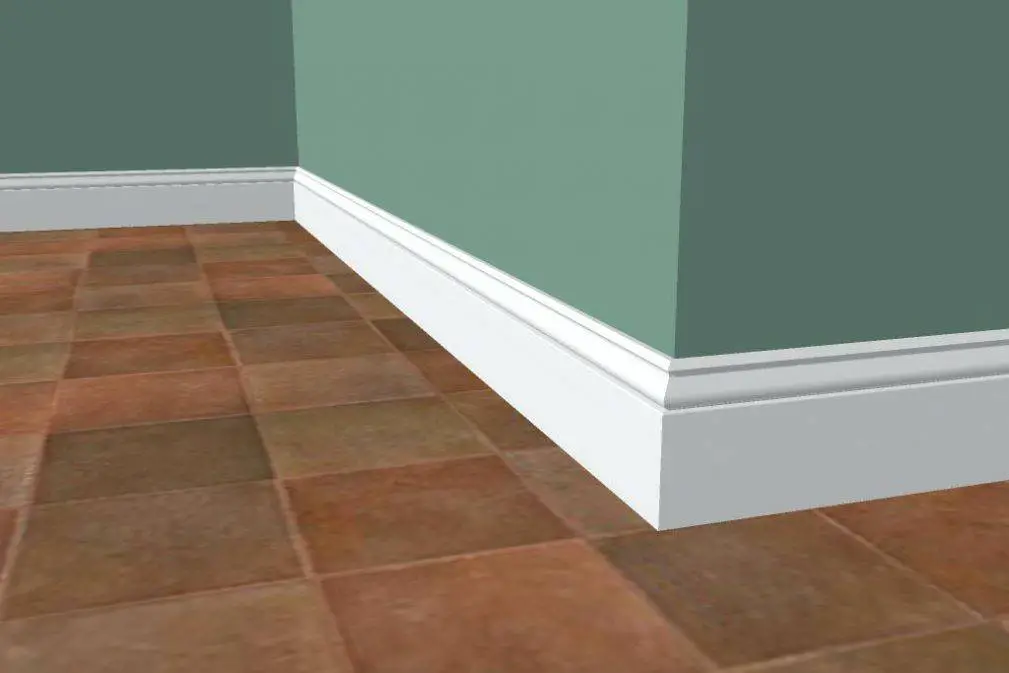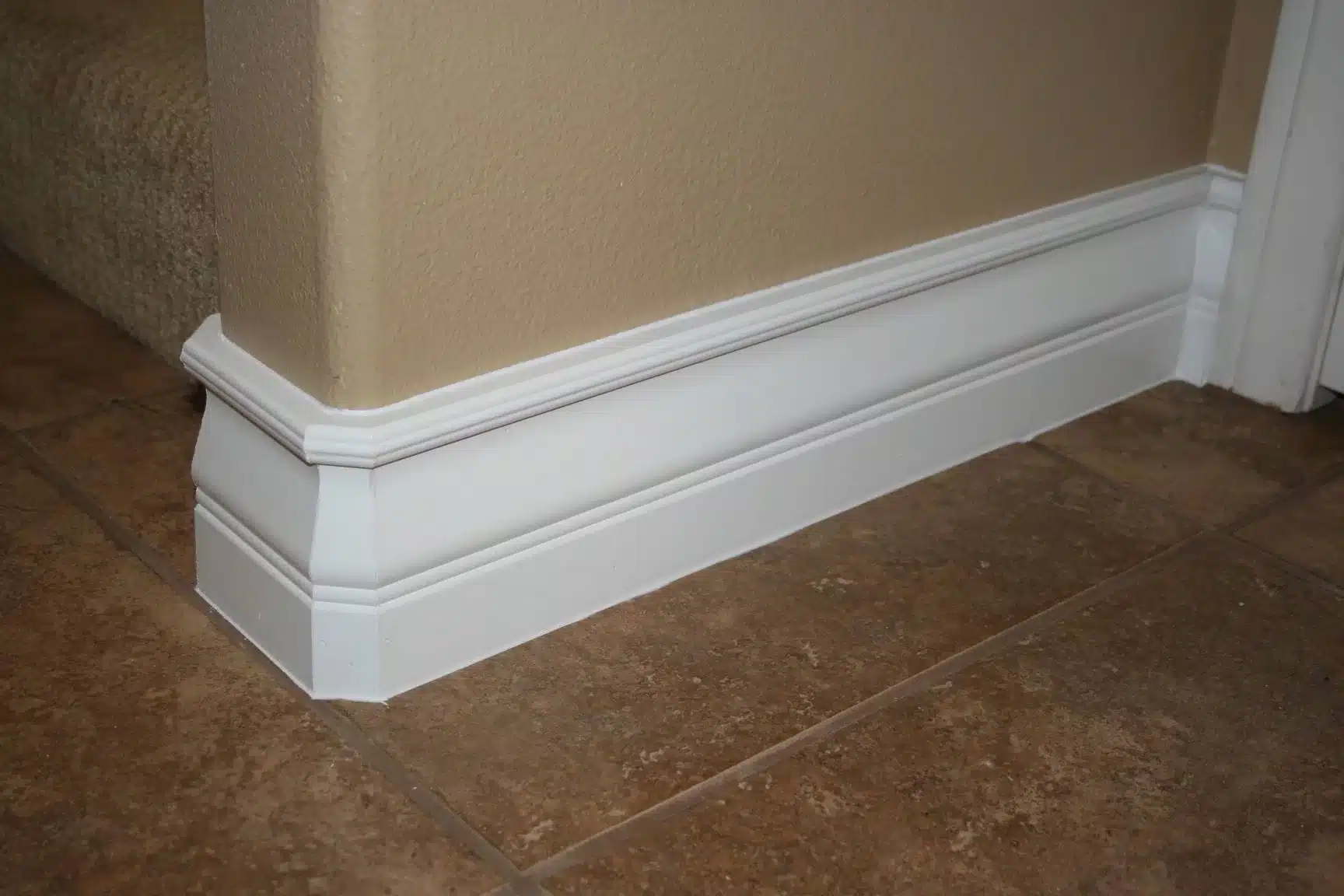How Thick Is Baseboard Trim
Introduction
How Thick Is Baseboard Trim: Baseboard trim is an essential component of interior design that adds a finishing touch to any room. It not only covers the joint between the wall and the floor but also protects the wall from damage caused by furniture, vacuum cleaners, and other household items. The thickness of baseboard trim plays a crucial role in determining its overall appearance and functionality.
Baseboard trim thickness can vary depending on personal preference, architectural style, and the size of the room. Generally, baseboard trim ranges from 1/2 inch to 1 inch in thickness. Thicker baseboards tend to create a more substantial and elegant look, while thinner ones provide a more minimalist and modern aesthetic. The choice of baseboard trim thickness should be based on the overall design theme and the desired visual impact.
One important consideration when determining the thickness of baseboard heat trim is the height of the room. In rooms with low ceilings, thicker baseboards can make the walls appear shorter and the ceiling lower. On the other hand, in rooms with high ceilings, thicker baseboards can help create a sense of proportion and balance. It is essential to strike the right balance between the height of the room and the thickness of the baseboard trim to achieve a harmonious and visually pleasing result.
Another factor to consider when choosing the thickness of baseboard trim is the style of the room. Traditional or ornate architectural styles often call for thicker baseboards to complement the intricate details and add a sense of grandeur. In contrast, contemporary or minimalist designs may benefit from thinner baseboards that create clean lines and a sleek appearance. The style of the room should guide the selection of baseboard trim thickness to ensure a cohesive and cohesive design.

What is the standard size of baseboards?
Interior designers finish and preserve wall bottoms with baseboards. Regular baseboard size questions predominate. Baseboard sizes vary by style and room height.
Average baseboard height is 3–8 inches. Common baseboards are 4–5 inches height. This standard size suits most rooms. Baseboards 6–8 inches can add drama and elegance to high-ceilinged interiors. Rooms with lower ceilings or simple decor have 3-inch baseboards.
Average baseboard width is proportional to height. The width of a 4-inch baseboard is normally 1/2 to 3/4 inch. For design balance, 6 inch or broader baseboards may be wider.
Baseboard size is subjective and relies on room style and personal choice. For an opulent or historic look, some homeowners prefer taller or wider baseboards, while others prefer smaller and simpler ones for a modern or minimalist look.
What is the thickest baseboard?
The thickest baseboard varies by maker and product series. The thickest baseboards are 1/2–1 inch. Thicker baseboards provide commercial and high-end homes a more robust and luxurious look. Some of the thickest baseboards are 1 inch. Solid wood or HDF baseboards with bold designs are typical. Hotels, ballrooms, and high-ceilinged homes use it. This baseboard’s thickness adds elegance.
Many baseboards are 3/4-inch thick. This thickness gives homes a sturdy aspect without being bulky. It comes in wood, MDF, or PVC, so homeowners may match their taste and budget.
The 1/2 inch baseboard is a great thinner but strong option. Commercial and residential buildings use this thickness for durability and beauty. Its varied materials and finishes make it versatile for many design trends. Consider more than baseboard width when choosing one for your space. For a cohesive look, consider the baseboard’s height, style, and material.
What is the best baseboard trim size?
When it comes to choosing the best baseboard trim size, there are several factors to consider. Additionally, the size of the baseboard trim can also affect the cost and installation process. In this article, we will explore some of the most common baseboard trim sizes and discuss their pros and cons.
One of the most popular baseboard trim sizes is 3 1/4 inches. This size is often considered a standard and is commonly used in both residential and commercial settings. The 3 1/4-inch baseboard trim provides a classic and timeless look that works well with a variety of architectural styles. It is also relatively easy to install and is typically more affordable compared to larger trim sizes.
For those looking for a more substantial and dramatic look, a larger baseboard trim size may be preferred. 5 1/4 inches is a common choice for those who want to make a statement with their baseboard trim. This size can add a sense of grandeur and elegance to a room, especially in larger spaces with high ceilings.
On the other end of the spectrum, some homeowners prefer a more minimalist and modern look. In these cases, a smaller baseboard trim size, such as 2 1/4 inches, may be the best choice. This size can create a sleek and clean aesthetic that works well in contemporary and minimalist design styles. Smaller baseboard trim sizes are also typically more affordable and easier to install.
Is baseboard thicker than casing?
Baseboard and casing are two different types of trim used in interior design. While both serve the purpose of covering gaps and transitions between walls and other surfaces, they have distinct differences in terms of their thickness. In general, baseboard is thicker than casing.
Casing, on the other hand, is used to trim the edges of doors and windows. It is thinner than baseboard because its primary function is to provide a decorative finish rather than protection. Casing is often used to create a frame around doors and windows, enhancing their appearance and adding architectural detail to a room.
While baseboard and casing can vary in thickness depending on the specific design and style chosen, it is generally true that baseboard is thicker than casing. This is because baseboard is typically made from solid wood or MDF (medium-density fiberboard), which provides greater strength and durability. Casing, on the other hand, is often made from thinner materials such as plywood or composite wood.
What is the purpose of baseboard?
Baseboards serve both a functional and aesthetic purpose in a home or building. They are typically installed at the bottom of walls, where the wall meets the floor. They act as a barrier, preventing scratches, dents, and scuff marks from appearing on the wall surface.
Baseboards can also help to conceal unsightly gaps or unevenness between the wall and the floor. They provide a seamless transition between these two surfaces, creating a more polished and cohesive look. This is particularly important in older homes or buildings where the walls and floors may not be perfectly aligned.
Another purpose of baseboards is to serve as a visual anchor for the room. They can help to define the boundaries of a space and create a sense of structure. By framing the bottom of the walls, baseboards can make a room feel more complete and put-together.
The standard thickness of baseboard trim typically ranges from 1/2 inch to 3/4 inch. This thickness is commonly used in most residential and commercial applications. The specific thickness may vary depending on the manufacturer and the style of the baseboard trim.
Baseboard trim is an essential element in interior design as it provides a finished look to the bottom of walls and covers the joint between the wall and the floor. It also helps protect the wall from damage caused by furniture, vacuum cleaners, and other objects. Therefore, it is important to choose the right thickness for your baseboard trim to ensure both aesthetic appeal and functionality.
Are there different thickness options available for baseboard trim?
Yes, there are different thickness options available for baseboard trim. The standard thickness of baseboard trim is typically around 1/2 inch to 3/4 inch. However, there are variations in thickness that can be found in the market. Some baseboard trims may be thinner, around 1/4 inch, while others may be thicker, up to 1 inch or more.
How can I determine the thickness of my existing baseboard trim?
Determining the thickness of your existing baseboard trim is a relatively simple process. The first step is to carefully measure the width of the trim using a tape measure. Make sure to measure the widest part of the trim, as some baseboard trim may have decorative elements that extend beyond the main body of the trim. Once you have the width measurement, you can then determine the thickness by measuring the depth of the trim. This can be done by measuring from the back of the trim to the front edge. It’s important to note that baseboard trim thickness can vary, so it’s always a good idea to measure multiple areas of the trim to ensure accuracy.
Does the thickness of baseboard trim affect its durability?
Yes, the thickness of baseboard trim can affect its durability. A thicker baseboard trim is generally more durable and resistant to damage compared to a thinner trim. This is because a thicker trim is less likely to warp or bend over time, making it more resistant to wear and tear.
Additionally, a thicker baseboard trim provides better protection for the walls against accidental bumps and impacts. It can help prevent dents and dings that may occur from furniture, vacuum cleaners, or other objects coming into contact with the walls. This can be especially important in high-traffic areas or homes with children or pets.
However, it’s important to note that the durability of baseboard trim is not solely determined by its thickness. The material used for the trim, such as wood or PVC, also plays a significant role in its durability. It’s essential to choose a high-quality material that is suitable for the specific needs and conditions of your home to ensure long-lasting and durable baseboard trim.
Are there any specific considerations to keep in mind when choosing the thickness of baseboard trim for different rooms or areas in a house?
When choosing the thickness of baseboard trim for different rooms or areas in a house, there are several important considerations to keep in mind. Firstly, the overall style and aesthetic of the room should be taken into account. Thicker baseboard trim can create a more dramatic and luxurious look, while thinner trim can provide a more subtle and modern appearance. Consider the existing architectural elements and design features of the room to ensure that the baseboard trim complements the overall style.
Another consideration is the size of the room. In larger rooms with higher ceilings, thicker baseboard trim can help to visually balance the space and create a more proportionate look. On the other hand, in smaller rooms or areas with lower ceilings, thinner trim can help to create the illusion of more height and space. It’s important to strike the right balance between the size of the room and the thickness of the baseboard trim to achieve a harmonious and visually pleasing result.

Conclusion
One of the main considerations when determining the thickness of baseboard trim is the architectural style of the space. Traditional or historic homes often feature thicker baseboard trim to match the grandeur and elegance of the overall design. On the other hand, modern or minimalist spaces may opt for thinner baseboard trim to maintain a sleek and clean aesthetic.
Another factor to consider is the height of the ceilings. Higher ceilings can accommodate thicker baseboard trim without overwhelming the space, while lower ceilings may benefit from thinner trim to create the illusion of height. Additionally, the size of the room should also be taken into account. Larger rooms can handle thicker baseboard trim, while smaller rooms may require thinner trim to avoid overpowering the space.
Ultimately, the thickness of baseboard moulding trim is a personal choice that should be based on the individual’s preferences and the overall design goals. It is important to consider the style of the space, the height of the ceilings, and the size of the room when making this decision. By carefully considering these factors, one can choose the appropriate thickness of baseboard trim that enhances the overall aesthetic and creates a harmonious balance within the room.








